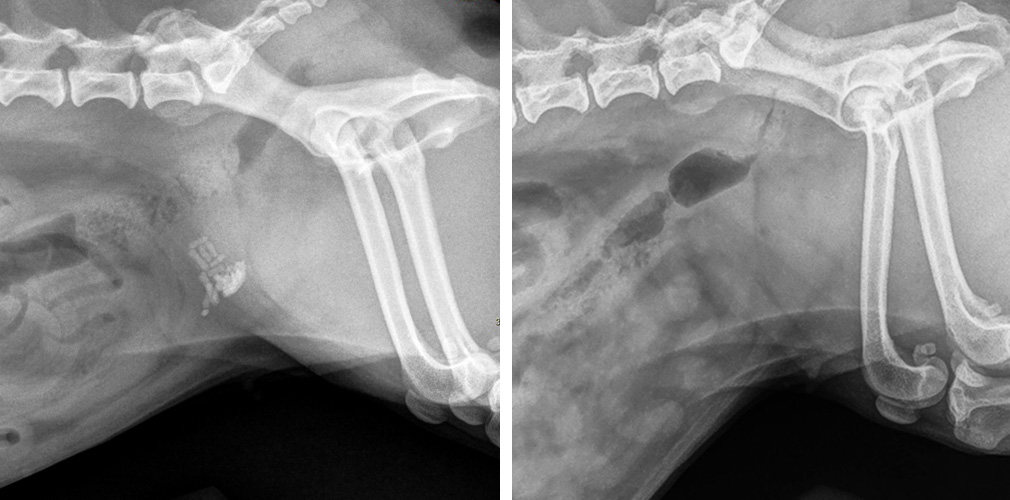But Experts Say, Don’t Get Too Close
It’s official. With confirmed sightings last August, nine-banded armadillos are now part of the wildlife scene in east central Illinois.
Dr. Julia Whittington, director of the Wildlife Medical Clinic, part of the University of Illinois College of Veterinary Medicine in Urbana, shares some fascinating facts about these new natives, whose range has been expanding northward from in the southeastern United States over the past century as temperatures rise and winters become milder.
More than 20 species of armadillos live in warm, humid climates in North, Central, and South America. Only the nine-banded armadillo is found in the United States—so don’t expect to encounter the pink fairy armadillo (at less than 6 inches long, the smallest species, which lives in Argentina) or the screaming hairy armadillo (also from South America) on a walk through the landscapes of Illinois.
Strange Creatures
Along with sloths and anteaters, armadillos are classified in the superorder Xenarthra, which literally translates to “strange joints.” In addition to the skeletal anomaly that earned them this name—having extra joints in their backbones—these creatures have plenty of other strange features. The most distinctive is the armor on their backs, which is why they were called “little armored one” by the Spanish settlers that first encountered them. The armor is made from the same substance as bone and horns.
Some other oddities of the nine-banded armadillo include:
- They can cross small bodies of water by holding their breath as they walk along the bottom.
- They have a lower body temperature than, and about half the metabolic rate of, other “placental mammals” (a classification that includes dogs and cats).
- The female gives birth to four genetically identical young from a single fertilized egg.
- When startled, they can jump a few feet straight up into the air.
They cannot, however, roll up into a ball.
“Only a couple of species of armadillo can actually roll completely into a ball, and the nine-banded armadillo is not one of them,” says Dr. Whittington.
Armadillo Prey and Predators
Armadillos also have very long claws, which they use for digging burrows, foraging for food, and escaping predators by digging a trench until only their armor shows. Natural predators of armadillos include coyotes, bobcats, and hawks.
“The young are born with leathery skin, which makes them more susceptible to becoming someone else’s dinner until the armor hardens,” says Dr. Whittington. “But like most wild animals, armadillos face the biggest threat from human beings. Armadillos are hunted as pests and are frequently run over on roadways.”
When it comes to their own diet, armadillos are generalist foragers, putting them in competition for food with the Virginia opossum here in Illinois.
“They use their very good sense of smell to locate invertebrate and insect prey, such as cockroaches, spiders, fire ants, and grubs,” says Dr. Whittington. “In this regard, they are doing us a favor in getting rid of insect pests.”
Dr. Whittington says armadillos are not likely to initiate a confrontation with a domestic animal. More likely, the armadillo will flee—they run surprisingly fast.
Admire Armadillos from Afar
And while these new neighbors will no doubt attract a lot of attention, Dr. Whittington also urges people to appreciate them from a distance.
“All wild animals can be carriers of disease, and every effort should be made to prevent direct contact between wild animals and domestic pets or people,” she advises. Nine-banded armadillos can carry the bacterial organism that causes leprosy, a skin infection that was historically associated with fear and stigmatization of affected persons. Today, leprosy infection in humans is highly treatable, and the bacterium does not survive well in the environment.
Dr. Whittington explains, “Despite the fact that approximately 20% of nine-banded armadillos carry this bacterium, risk of transmission between armadillos and people is very low, only occurring through direct handling or harvesting these animals for food.”
If you have any other questions about nine-banded armadillos, or how to help wildlife in the area, contact your local veterinarian or visit the Wildlife Medical Clinic’s website for more information.
By Hannah Beers
Featured photo from the University of Georgia College of Agriculture & Environmental Sciences

![[nine-banded armadillo]](https://vetmed.illinois.edu/wp-content/uploads/2021/04/pc-armadillo.jpg)


